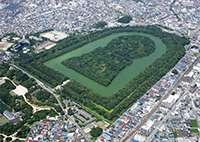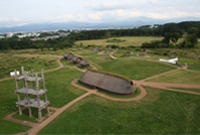In 1992, Japan accepted the World Heritage Convention (Convention concerning the Protection of the World Cultural and Natural Heritage) that was adopted by the General Conference of UNESCO in 1972 (came into force in 1975). It was 1993 that the first inscription of Japanese properties on the World Heritage List. As of July 2024, 1,223 sites have been inscribed on the list,of which 952 are caltural sites, 231 are natural sites, and 40 are mixed sites. Among them are 26 World Heritage sites in Japan, including 21 cultural sites and 5 natural sites.
List of World Heritage sites in Japan
Sado Island Gold Mines  Doyu-no-Warito ©Nishiyama Hoichi |
Mozu-Furuichi Kofun Group: Mounded Tombs of Ancient Japan  Nintoku-tenno-ryo Kofun © Sakai City |
Jomon Prehistoric Sites in Northern Japan  Sannai Maruyama Site Source: JOMON ARCHIVES |
In nomination:
Ancient Capitals of Asuka and Fujiwara
Links:
- Japanese Properties inscribed on the World Heritage List (UNESCO World Heritage Centre)
- World Heritage and Intangible Cultural Heritage in Japan (Permanent Delegation of Japan to UNESCO)
- The Operational Guidelines for the Implementation of the World Heritage Convention (latest verstion) (World Heritage Center website)
Adobe Reader is required for viewing PDF files.
If it is not installed on your computer, you can download it here.







